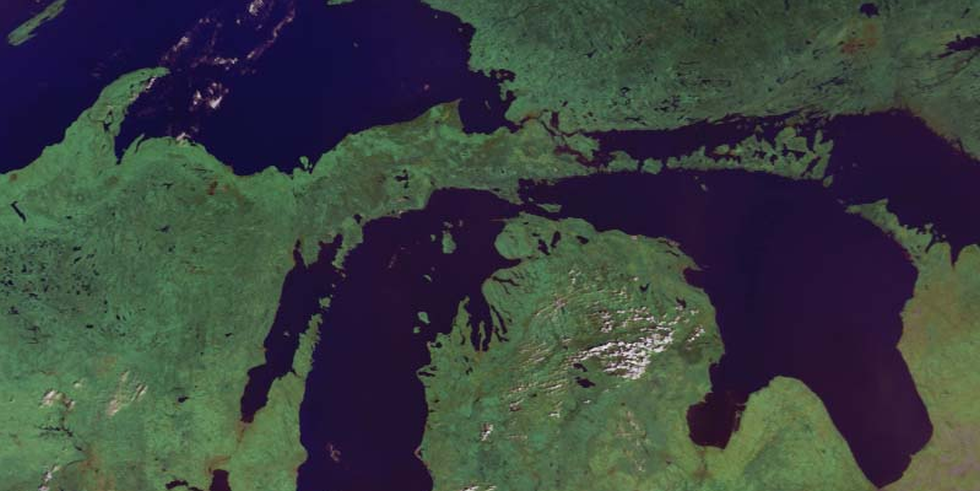
Up North Progressive
Politics and commentary for Northern MichiganEagle Mine Saga Act Two: Tripling Wastewater Outfalls Necessary To Mine’s Industrial Health
Sunday , 2, August 2015 Environment, Upper Peninsula 5 CommentsA recent press release from Save The Wild UP, dated July 23, 2015, states that in January, the Humboldt processing facility for Eagle Mine put in a request for a new permit with the Michigan Department of Environmental Quality to continue putting wastewater into local watersheds around the plant. The permit also asked to nearly double the output by installing a second outfall. This permit was granted despite public outcry from locals, environmental groups, and Native American tribes living in the area.
On July 2, 2015, the MDEQ issued a press release on their website they are modifying the January permit by allowing a third outfall to discharge wastewater from the plant. The third outfall according to Save The Wild U.P would:
divert a portion of the mill’s wastewater to a new location. It will be dumped into a poor-quality cattail wetland adjacent to the Humboldt Pit, a site already polluted by historic mine tailings discharge. From there, the wastewater will flow north, passing underneath US-41 through a culvert before entering the Humboldt Wetland Mitigation Bank property, en route to the Escanaba river.
Looking at the photo above provided by Save The Wild U.P. above shows where the new wastewater discharge points will be, and the flow for all of them leads right to the middle branch of the Escanaba River. Save The Wild U.P. and residents in the area are very concerned what this increased wastewater discharge will do to the surrounding wetlands. There may even be evidence that Eagle Mine is breaking the law. The rules about mitigation banks, how they must be maintained and what they are to be used for is clearly defined:
Under Michigan law, R 281.954, Rule 4, “(1) A mitigation bank is a site where wetlands are restored, created, or, in exceptional circumstances, preserved expressly for the purpose of providing compensatory mitigation in advance of the unavoidable loss of wetlands authorized by the act. A mitigation bank shall be maintained in perpetuity. (2) The objective of mitigation banking is to provide for the replacement of chemical, physical, and biological wetland functions (….) Single function, low quality wetlands, such as wastewater ponds, will not qualify as mitigation sites.”
This law is taken almost word for word from the EPA definition of a mitigation bank. Building and maintaining them is very specific, as well as how they’re used in preserving wetlands. What does this mitigation bank have to do with Eagle Mine’s Humboldt processing plant? Save The Wild U.P. provides another clue to what is going on. The mitigation bank is owned by A. Lindberg and Sons, the company also building the new outflow for Eagle Mine’s Humboldt facility. Coincidence, or conflict of interest?
But there’s more to this.
MDEQ, in issuing the current NPDES permit, granted Eagle Mine an exemption to the Clean Water Act’s critical antidegradation policy, based on the mine’s claim that water quality degradation in the Escanaba River watershed is necessary to accommodate “economic and social benefits” in the area — a claim debated by many local residents, environmentalists, and the Keweenaw Bay Indian Community, which views degradation of the watershed as a threat to treaty-protected resources.
This amendment to the permit came on fast, and no public meeting took place for affected communities to provide input. Michigan DEQ currently accepts written comments only by email at snows2@michigan.gov addressed to Sam Snow. Anyone wanting to write to MDEQ about this also has very little time, as the deadline to leave comments is Monday, August 3.
One has to ask, what’s the rush, Eagle Mine? The new permit is only months old and already they require a change? There is even more to this story, and that will come in Act Three.
Eagle is not demanding a new road – plain and simple. The company is not a part of the lawsuit and is not contributing financially. The company already invested roughly $50 million in upgrades to existing roads. Furthermore, logging and other mining companies have use the same route through Marquette for decades.
When you build a house do your plans change at all? Of course. The same goes for any building or structure, including a mine.When things change you go through the proper procedures to ensure the changes are carefully considered and appropriately made. – Dan Blondeau
Jan, The plan to direct ship ore was prior to Eagle buying, cleaning up, and refurbishing the Humboldt Mill. This plan dates back to 2004 when we were in the stages of permitting and design. Today the ore is trucked to the mill, processed, and then railed to facilities and ports in Canada. By using the mill we’re able to extract more ore – which means more jobs, investment, and taxes for the community. If you honestly believe the roughly 200 employees (85% Yoopers) and 200 contractors are destroying our home you need to come and take a tour of each site and talk to the people that run them. Dan Blondeau – Eagle Mine
-
Plan and simple, Dan Blondeau (specifically Dan Blondeau) has lost the public trust, if Eagle ever had it. It may be time to rethink the trolling and mocking public relations strategy, and get someone believable — and someone more mature in Eagle’s communications department.
Inch by inch they creep into our pristine environment. They started out that they were going to send all of the ore to Canada for processing. Now look!!! All for the $$$$$. We are going to be left with a polluted mess and no clean water. Horrid
